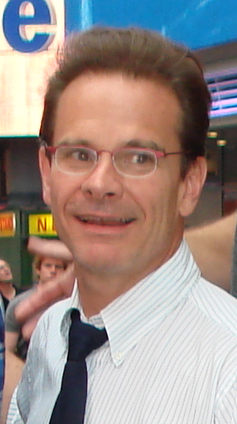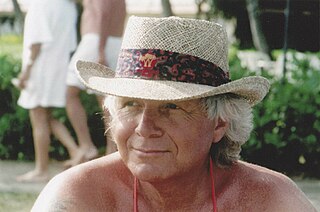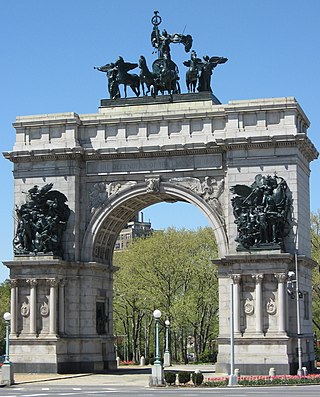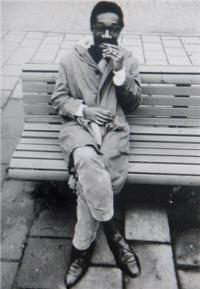Related Research Articles

Leonard Michael Maltin is an American film critic, film historian, and author. He is known for his book of film capsule reviews, Leonard Maltin's Movie Guide, published annually from 1969 to 2014. Maltin was the film critic on Entertainment Tonight from 1982 to 2010. He currently teaches at the USC School of Cinematic Arts and hosts the weekly podcast Maltin on Movies. He served two terms as President of the Los Angeles Film Critics Association, and votes for films to be selected for the National Film Registry.

The Frick Collection is an art museum on the Upper East Side of Manhattan in New York City, New York, U.S. It was established in 1935 to preserve the art collection of the industrialist Henry Clay Frick. The museum consists of 14th- to 19th-century European paintings, as well as other pieces of European fine and decorative art. It is located at the Henry Clay Frick House, a Beaux-Arts mansion designed for Henry Clay Frick. The Frick also houses the Frick Art Reference Library, an art history research center established by Frick's daughter Helen Clay Frick in 1920, which contains sales catalogs, books, periodicals, and photographs.

The New Hollywood, Hollywood Renaissance, American New Wave, or New American Cinema, was a movement in American film history from the mid-1960s to the early 1980s, when a new generation of filmmakers came to prominence. They influenced the types of film produced, their production and marketing, and the way major studios approached filmmaking. In New Hollywood films, the film director, rather than the studio, took on a key authorial role.

Peter Thomas Scolari was an American actor. He was best known for his roles as Henry Desmond in the ABC sitcom Bosom Buddies (1980–1982) and Michael Harris on the CBS sitcom Newhart (1984–1990) the later of which earned him three consecutive nominations for Primetime Emmy Awards for Outstanding Supporting Actor in a Comedy Series from 1987 to 1990.

Bell and Howell is a United States brand of cameras, lenses, and motion picture machinery. It was originally founded as a company in 1907, and headquartered in Wheeling, Illinois. The company was acquired by Böwe Systec in 2003. Since 2010, the brand name has been licensed for a variety consumer electronics products.
All About Faces was a weekly game show which ran from August 30, 1971, to September 1972. The series incorporated a "hidden camera" format similar to Candid Camera. The program was produced in Toronto by Screen Gems, at the studios of CFTO-TV in Scarborough, Toronto, Ontario. Richard Hayes was host, and the show's producer was Dan Enright. The show was short-lived, lasting only one season in U.S. television syndication and on Canada's CTV.

Hal Mohr, A.S.C. was a famed movie cinematographer who won an Oscar for his work on the 1935 film A Midsummer Night's Dream. He was awarded another Oscar for The Phantom of the Opera in 1943 and received a nomination for The Four Poster in 1952.

Thomas Del Ruth is a retired American cinematographer.
Steve Karmen is an American composer known for his jingles, including "I Love New York", "Call Nationwide, 'Cause Nationwide Is On Your Side", and "Here Comes the King." The King of Jingles, as he is informally known, has written more than 2,000 advertising jingles and is the recipient of 16 advertising Clio Awards. Prior to working in advertising, Karmen was a Calypso singer and scored soundtracks for nudie films such as The Candidate (1964) and What Do You Say to a Naked Lady? (1970).
Badja Medu Djola was an American actor from Brooklyn, New York who worked primarily within black film. He is best known for Mississippi Burning, Penitentiary, A Rage in Harlem, and Who's the Man?.
John Korty, was an American film director and animator, best known for the television film The Autobiography of Miss Jane Pittman and the documentary Who Are the DeBolts? And Where Did They Get Nineteen Kids?, as well as the theatrical animated feature Twice Upon a Time. He has won an Academy Award for Best Documentary Feature and several other major awards. He is described by the film critic Leonard Maltin as "a principled filmmaker who has worked both outside and within the mainstream, attempting to find projects that support his humanistic beliefs".
Judy Strangis is an American actress. She is best known for her roles in two ABC television series Room 222 (1969–1974) and Electra Woman and Dyna Girl (1976–1977).

Sam Rubin was an American journalist who served as the entertainment reporter for the KTLA Morning News and as a television host of entertainment talk shows and specials. He reported on the entertainment industry for over thirty years and interviewed many Hollywood stars. He was also the co-author of two biographies, one on the former first lady Jacqueline Onassis and another about actress Mia Farrow.

The Soldiers' and Sailors' Arch is a triumphal arch at Grand Army Plaza in Brooklyn, New York, United States. Designed by John Hemenway Duncan and built from 1889 to 1892, the arch commemorates American Civil War veterans. The monument is made of granite and measures 80 feet (24 m) tall, with an archway opening measuring 50 feet (15 m) tall and 35 feet (11 m) wide. The arch also includes spandrels by Philip Martiny, equestrian bas-reliefs by Thomas Eakins and William Rudolf O'Donovan, and three sculptural groups by Frederick MacMonnies. It is one of New York City's three major triumphal arches.
Gordon Singleton was a Canadian world-record holding track cyclist. In 1982, he became the first Canadian cyclist to win a world championship. He was the first, and only, cyclist in history to simultaneously hold world records in all three of track cycling's sprint races: the 200m, 500m and 1000m distances, all in a 24-hour span from October 9–10 in 1980. An Olympic racer, he was deprived of competing in the 1980 Summer Olympics at the peak of his career by Canada's boycott of those games in Moscow. He also competed and won gold medals in the 1978 Edmonton Commonwealth Games, and the 1979 Puerto Rico Pan Am Games for Canada. At the end of 1986, he was named a Companion of the Order of Canada. In his middle-age, he continued to cycle and took part in Master Series races, getting a bronze medal at the Canadian Nationals for his age group in 2014. He was inducted into the Canadian Cycling Hall of Fame in October 2015 along with some of his teammates from the 1970s and 1980s. His hometown of Niagara Falls, Ontario celebrated him many times over his life, including in 2004, as their best athlete in its first 100 years. After his cycling career was over, he took over his father's automotive parts business in Niagara Falls. In 2023, he was diagnosed with Cancer, and died from the disease in March 2024.
Tarzan: The Complete Russ Manning Newspaper Strips is a series of books collecting the complete Edgar Rice Burroughs' Tarzan comic strip written and drawn by Russ Manning, an American daily and Sunday strip title originally published in newspapers between 1967 and 1979, via United Feature Syndicate. The first volume of the series was awarded the Eisner Award in the category Best Archival Collection/Project—Strips in 2014. The series was published by The Library of American Comics from 2013 to 2015.

Roland Ayers (1932–2014) was an African American watercolorist and printmaker. He is better known for his intricate drawings – black-ink figures of humans and nature intertwined in a dream-like state against a neutral backdrop. A poet and lover of jazz and books, he expressed his poetry through images rather than words, he often noted, and considered his artwork to be poetry.

Benjamin Franklin (Ben) Britt was a figurative, surrealist and abstract painter, and art teacher. His subjects were African American culture, religion and children, which he captured in oil and charcoals. Britt signed his works “B. Britt,” dotting the “i” with tiny round circles.
Henry Bozeman Jones was an African American artist, writer, print-maker, illustrator, teacher, athletic coach and school counselor. He was known primarily for his portraits and landscapes.
Spartus Corporation was an American consumer electronics manufacturer originally based in Chicago, Illinois. Founded as the Utility Manufacturing Company in 1934, it produced a wide variety of products, including wall clocks, alarm clocks, electric shavers, analog cameras, and more. It sold these through a medley of brands—including Falcon, Spartus, Galter, Regal, Monarch, Spencer, among others. It was founded in 1934 by Jack Galter (1904–1993) as a continuation of his father's manufacturing company.
References
- ↑ Gomery, Douglas (Spring 1972). "Behind the Camera: The Cinematographer's Art". The Velvet Light Trap . No. 4. p. 55. ProQuest 1306638267.
- ↑ Rubin, Jay (1979-05-03). "The Rubins Look at the Books". Muscatine Journal . Retrieved 2024-08-02– via Newspapers.com.
- ↑ Mapes, Terry (1979-07-29). "The forest is an old but perfect life circle". News Journal . Retrieved 2024-08-02– via Newspapers.com.
- ↑ Mitchell, Lisa (1979-06-17). "Screenplay". Los Angeles Times . ProQuest 158927166 . Retrieved 2024-08-02– via Newspapers.com.